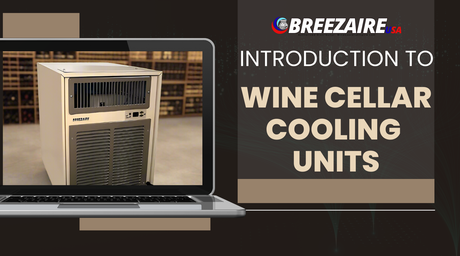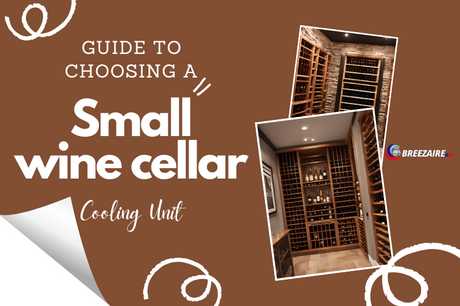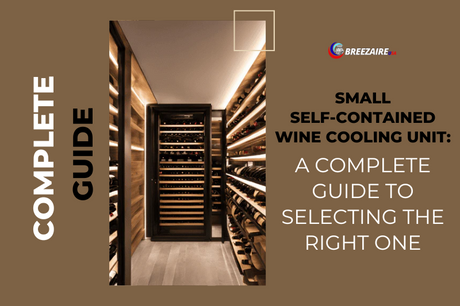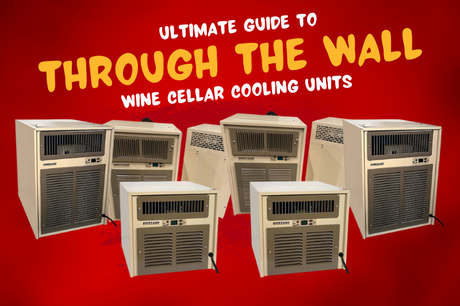Comprehensive Guide to Through-the-Wall Wine Cellar Cooling Units
By Jim Hopper, Wine Cooling Expert
Imagine opening a treasured vintage, only to find it's been compromised by heat and humidity.
Whether you're a seasoned collector or a casual enthusiast, preserving your wine at the right temperature is non-negotiable. One of the most straightforward solutions? A through-the-wall wine cooling system.
In this guide, we’ll explore how these compact, self-contained systems deliver consistent climate control, compare the best Breezaire models, and help you find the perfect cooling unit for your cellar. Want to start your planning from scratch? Explore our full Wine Cellar Cooling System Planning Guide.
Table of Contents
- What is a Through-the-Wall Cooling System?
- Advantages of Through-the-Wall Cooling Systems
- How These Units Work
- Key Features
- Installation Guide
- How to Choose the Best Unit
- Breezaire Model Comparison
- Conclusion
- People Also Ask
What is a Through-the-Wall Cooling System?

These self-contained units are installed directly into a cellar wall. They pull air from an adjoining room, cool it, and push it into the cellar while venting warm air out. No external ductwork or compressor needed.
Advantages of Through-the-Wall Cooling Systems
- Easy Installation: Fits into standard wall cavities.
- Low Maintenance: Minimal upkeep needed beyond basic filter cleaning.
- Quiet Operation: Advanced fans keep noise low.
- Energy Efficient: Reliable and budget-friendly cooling.
How Through-the-Wall Cooling Units Work

These systems recirculate air inside the wine cellar while drawing fresh air from an adjacent space. Internal thermostats maintain temperature between 50–65°F, and some models include integrated humidity controls.
Key Features of Through-the-Wall Units
- All-in-one, self-contained construction
- Humidity regulation between 50–70%
- Minimal vibration to protect wine aging
- Optional digital control panels
Installation Process for Through-the-Wall Cooling Units
- Wall Preparation: Ensure adjacent room ventilation and measure precisely.
- Wall Cutout: Cut to fit manufacturer dimensions.
- Mount & Seal: Fit unit snugly and use weatherproof caulk around edges.
- Check Ventilation: Ensure rear clearance and unobstructed airflow.
How to Choose the Right Through-the-Wall Wine Cellar Cooling Unit

- Match unit capacity to your cellar's cubic footage.
- Look for models with quiet fans if the cellar is near a living space.
- Prioritize digital temperature control and adjustable humidity.
Breezaire Through-the-Wall Cooling Systems: Models & Capacities
| Model | Capacity | Ideal For | Buy Now |
|---|---|---|---|
| WKL 1060 | Up to 140 cu. ft. | Small cabinets or closet cellars | Shop WKL 1060 |
| WKL 2200 | Up to 265 cu. ft. | Apartment or condo cellars | Shop WKL 2200 |
| WKL 4000 | Up to 1000 cu. ft. | Home basement wine rooms | Shop WKL 4000 |
| WKL 8000 | Up to 2000 cu. ft. | Large walk-in cellars | Shop WKL 8000 |
Conclusion

Through-the-wall wine cooling systems provide an excellent balance of simplicity, efficiency, and affordability. With models like the Breezaire WKL series, you can enjoy consistent wine cellar temperatures and low-maintenance performance.
Ready to upgrade your wine storage? Browse our collection of through-the-wall wine cellar cooling units now.








